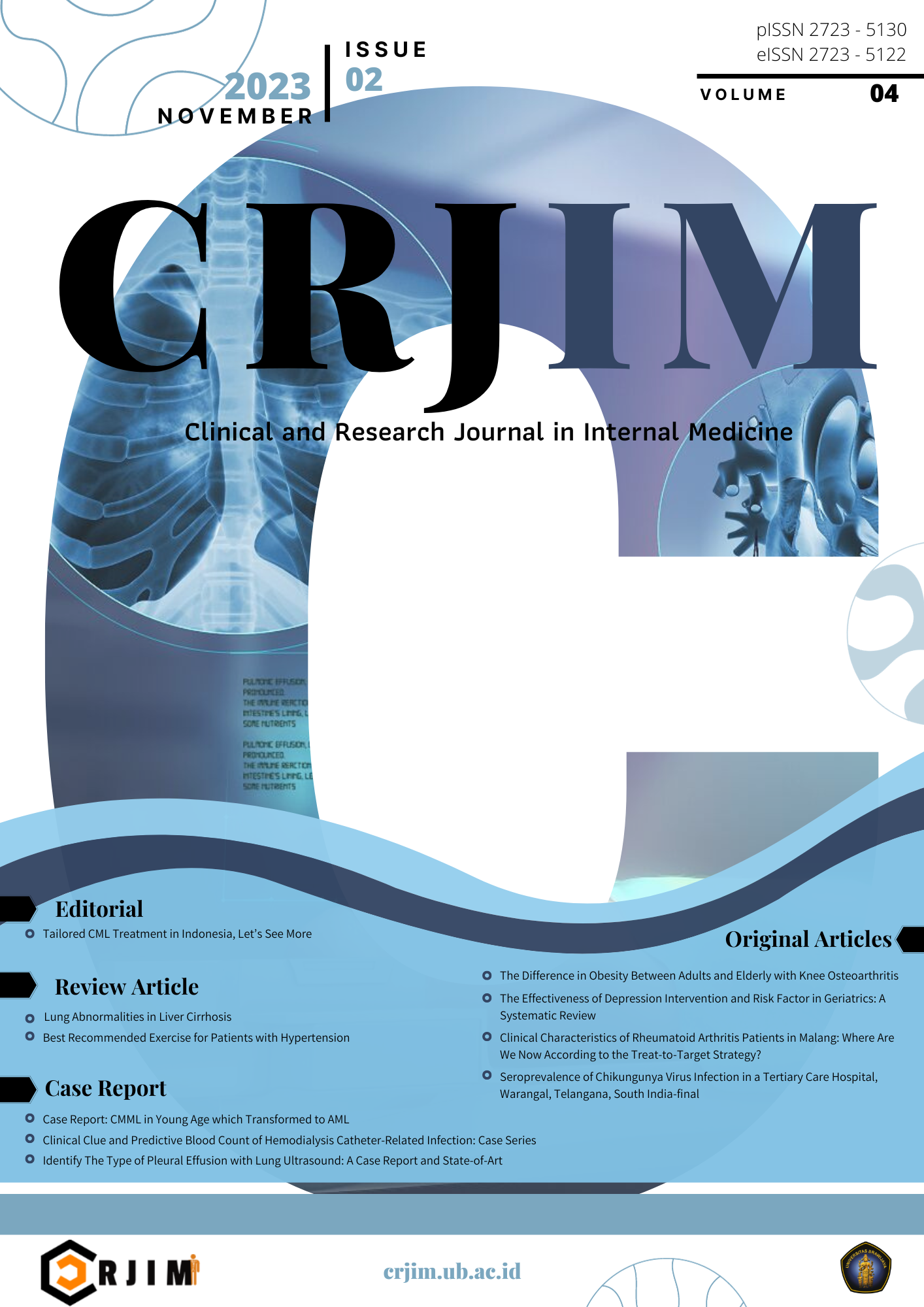The Relationship between Increased Transaminase Enzyme Levels on Severity and Mortality of COVID-19 Patients treated at RSUD Dr. Saiful Anwar Malang
DOI:
https://doi.org/10.21776/ub.crjim.2022.003.01.5Keywords:
ALT, AST, severity, mortality, COVID-19Abstract
Background: The involvement of the liver in COVID-19 is not yet well understood, but several studies have suggested an association between elevated liver transaminases and the severity and mortality of COVID-19.
Aim: This study aims to analyze the liver enzyme profiles of COVID-19 patients and determine the correlation between the severity of COVID-19 with the risk of mortality.
Methods: The study was an observational study with case-control analysis. It was conducted between August 1, 2020, and October 31, 2020. The samples were collected consecutively based on the order of hospitalized research subjects in RSUD dr. Saiful Anwar Malang, East Java, Indonesia and were handed by the department of internal medicine. RT-PCR was used to confirm the diagnosis of COVID-19. The collected and grouped data was presented in tabulated form, and statistical analysis was carried out using a non-parametric analysis test with the Chi-Square Test method.
Results: The study found that 51.4% of patients had elevated AST (Aspartate transaminase) levels, and 41.8% had elevated ALT (alanine aminotransferase) levels. AST and ALT data showed the severity and mortality variable's probability value (p-value) was < 0.005.
Conclusion: This study's results indicated a significant relationship between increased transaminase enzymes with the severity and mortality rate of COVID-19 patients.
References
Putri RN. Indonesia dalam menghadapi pandemi Covid-19. Jurnal Ilmiah Universitas Batanghari Jambi. 2020;20(2):705–9.
Alqahtani SA, Schattenberg JM. Liver injury in COVID‐19: The current evidence. United European Gastroenterol j. 2020 Jun;8(5):509–19.
Papadopoulos N. COVID-19 and liver injury: where do we stand? aog [Internet]. 2020 [cited 2022 Mar 25]; Available from: http://www.annalsgastro.gr/files/journals/1/earlyview/2020/ev-07-2020-22-AG_5214-0522.pdf
Kumar A, Kumar P, Dungdung A, et al. Pattern of liver function and clinical profile in COVID-19: A cross-sectional study of 91 patients. Diabetes & Metabolic Syndrome: Clinical Research & Reviews. 2020;14(6):1951–4.
Pott-Junior H, Bittencourt NQP, Chacha SFG, et al. Elevations in Liver Transaminases in COVID-19: (How) Are They Related? Front Med. 2021 Jul 15;8:705247.
Cai Q, Huang D, Yu H, et al. COVID-19: Abnormal liver function tests. Journal of Hepatology. 2020 Sep;73(3):566–74.
Jiang S, Wang R, Li L, et al. Liver Injury in Critically Ill and Non-critically Ill COVID-19 Patients: A Multicenter, Retrospective, Observational Study. Front Med. 2020 Jun 23;7:347.
Hajifathalian K, Krisko T, Mehta A, et al. Gastrointestinal and hepatic manifestations of 2019 novel coronavirus disease in a large cohort of infected patients from New York: clinical implications. Gastroenterology. 2020;159(3):1137–40.
Ramachandran P, Perisetti A, Gajendran M, et al. Increased serum aminotransferase activity and clinical outcomes in coronavirus disease 2019. Journal of clinical and experimental hepatology. 2020;10(6):533–9.
Lei F, Liu Y, Zhou F, et al. Longitudinal association between markers of liver injury and mortality in COVID‐19 in China. Hepatology. 2020;72(2):389–98.
Boregowda U, Aloysius MM, Perisetti A, et al. Serum activity of liver enzymes is associated with higher mortality in COVID-19: a systematic review and meta-analysis. Frontiers in medicine. 2020;431.

Published
How to Cite
Issue
Section
License
Copyright (c) 2022 Clinical and Research Journal in Internal Medicine

This work is licensed under a Creative Commons Attribution 4.0 International License.
The copyright of the received article shall be assigned to the journal as the publisher of the journal. The intended copyright includes the right to publish the article in various forms (including reprints). The journal maintains the publishing rights to the published articles.

















